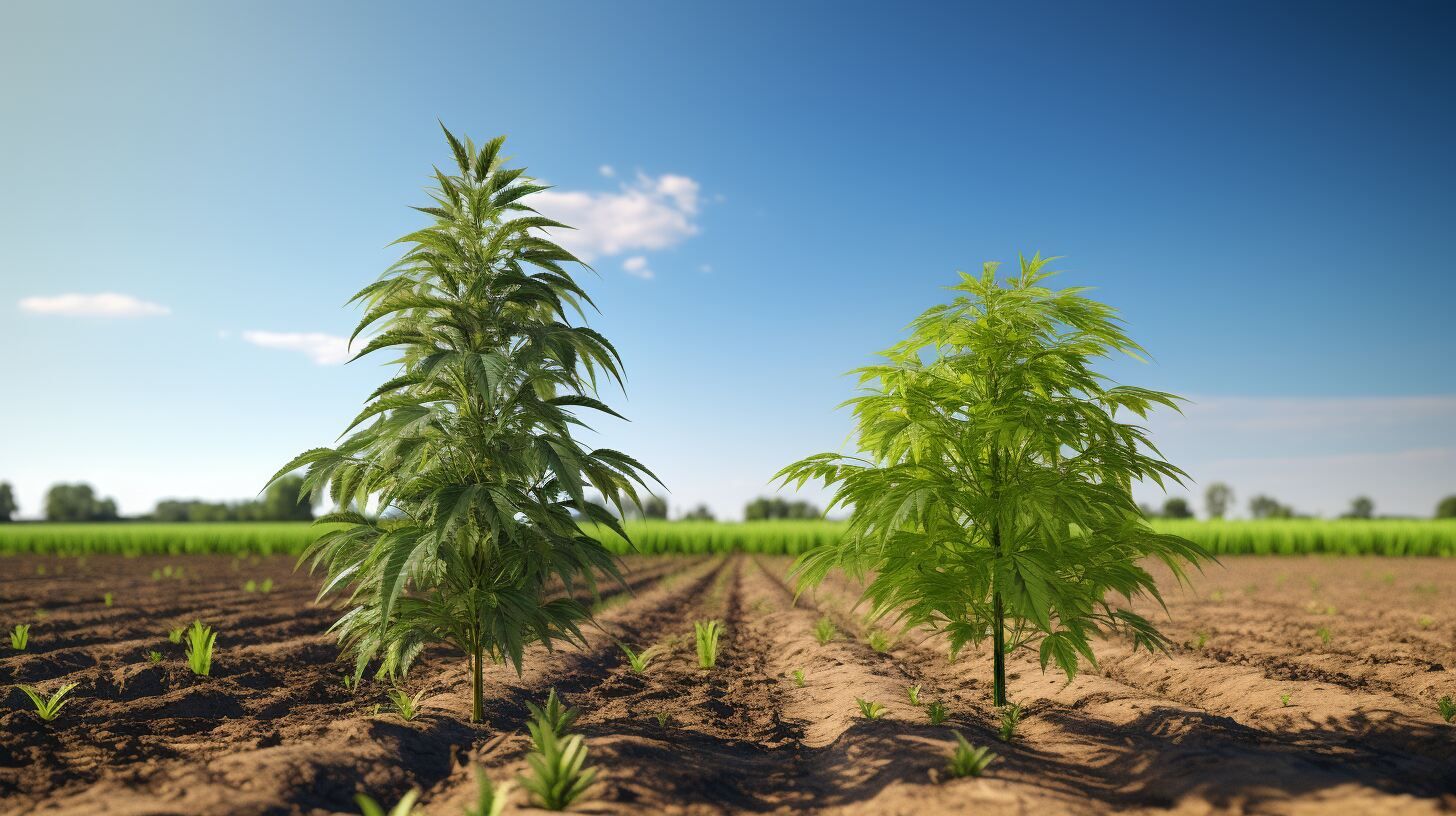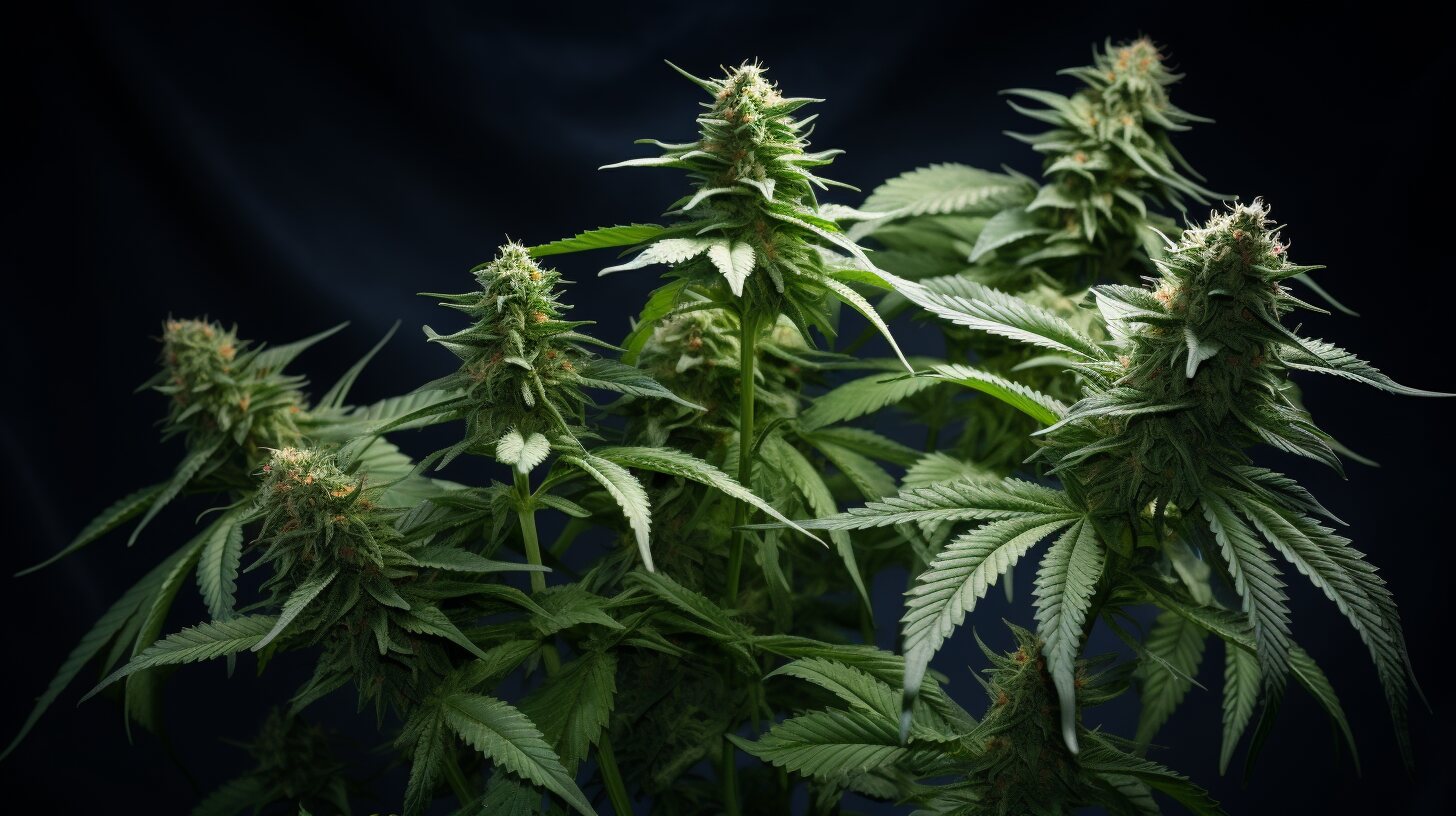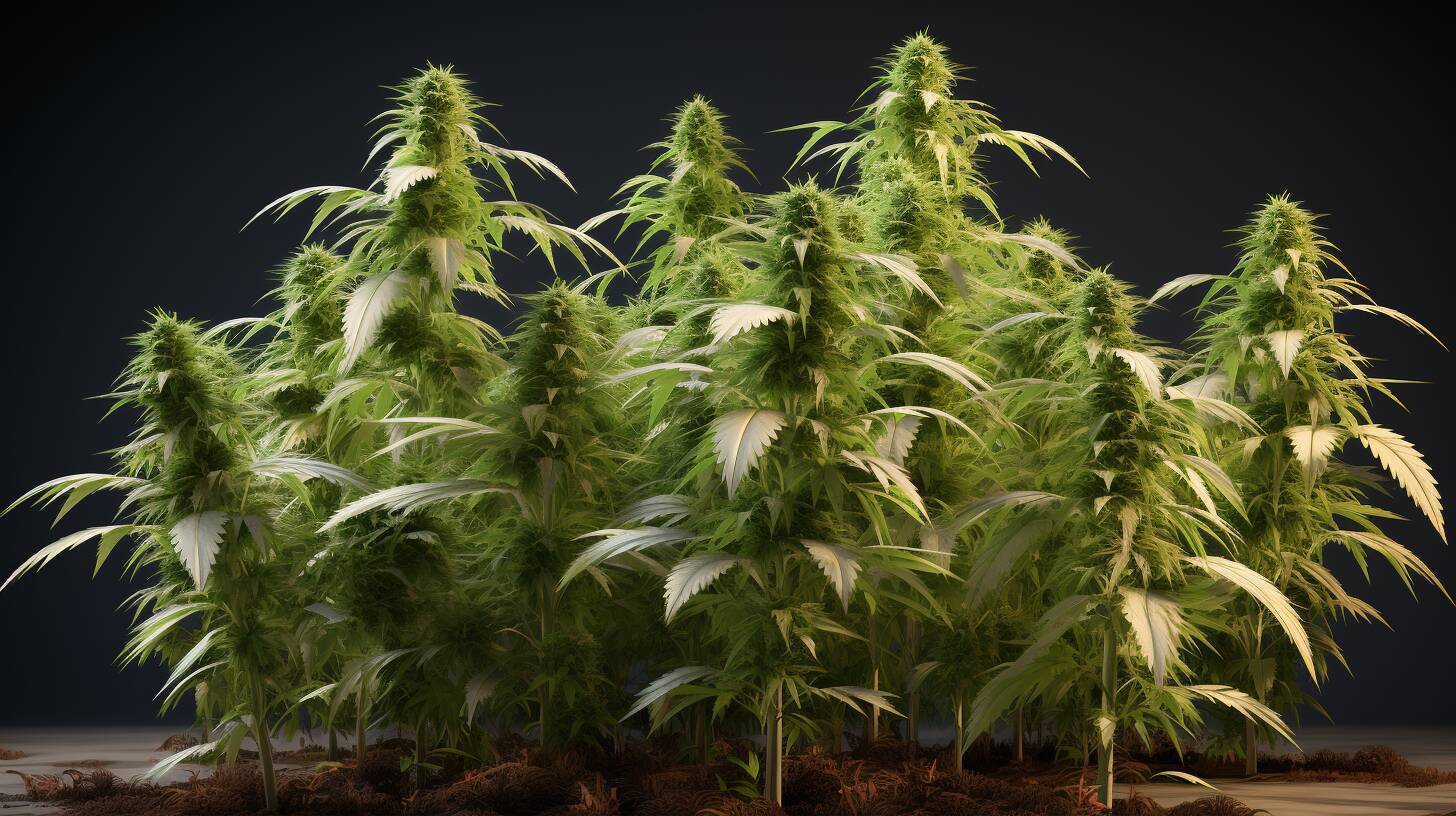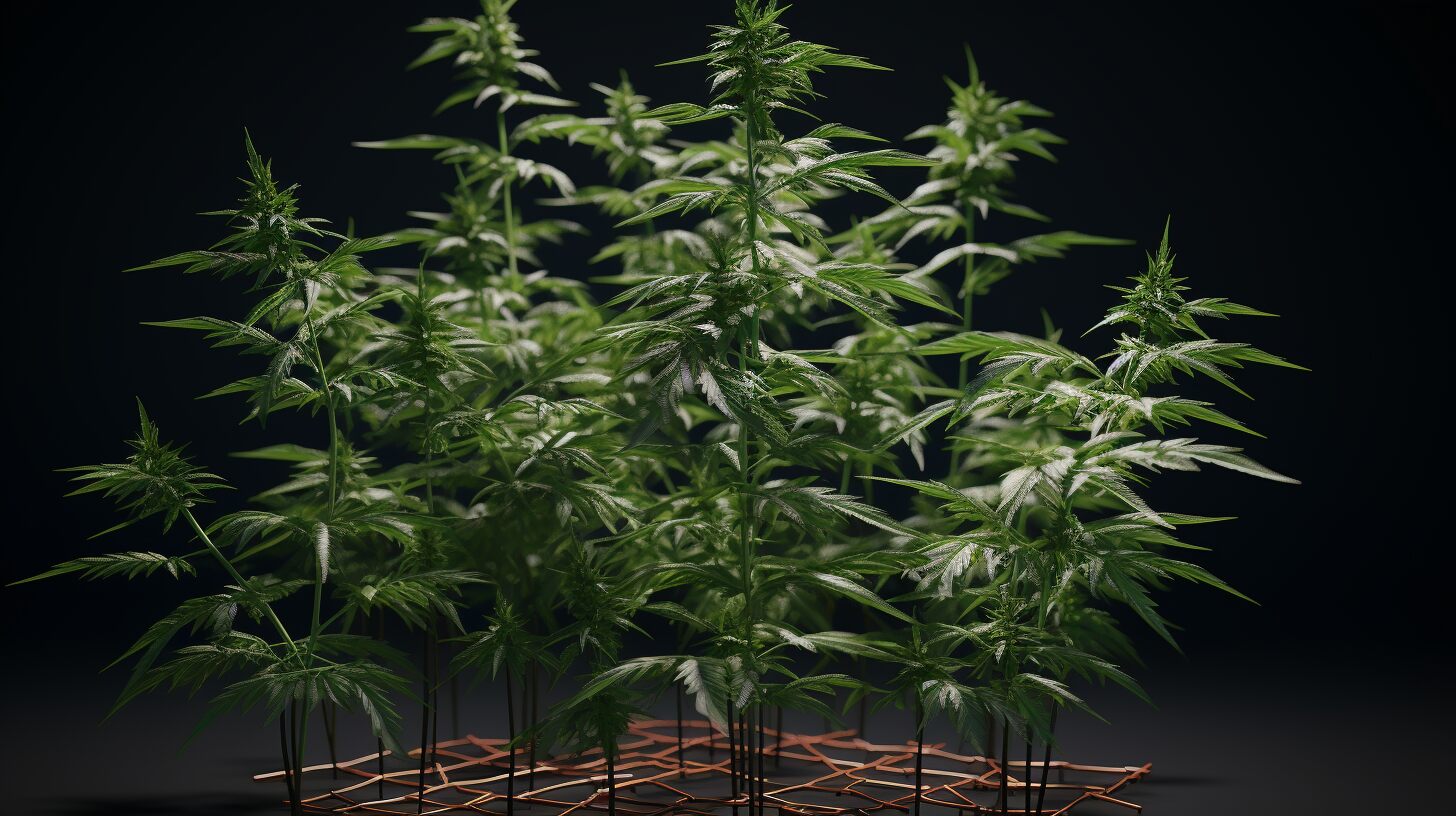Mainlining cannabis is a game-changing technique in the world of cannabis cultivation, offering remarkable benefits like boosting yields and enabling meticulous plant shaping—especially advantageous in space-constrained environments.
Even better, this method, centered around creating a manifold, is remarkably simple to implement once familiar with it, making it a perfect choice for growers of all experience levels. If you've heard the term before but lack understanding or insight into its functionality and benefits, don't fret.
This guide will take you through everything you need to know about mainlining cannabis, helping you unlock its full potential.
Understanding Mainlining Cannabis
Mainlining cannabis is like giving a plant special training to grow big and strong. This method makes sure each part of the plant gets just the right amount of light and food. It starts by cutting the young plant in a way that creates two main branches. These branches will grow huge buds later on.
Using this technique takes some work, but it pays off with your plants growing evenly. Each branch can hold heavy flowers because they all have equal strength. Think about a tree with many small branches versus one with a few strong ones – that's what mainlining does for your cannabis plants! It helps them use their energy better, so you end up with more to harvest at the end.
Essential Equipment for Mainlining Cannabis
Getting the right tools is vital for mainlining cannabis successfully. You need equipment that supports your plants and helps you shape them just right.
- Soft garden ties: You'll use these gentle ties to hold down branches without hurting them. They help guide the growth in the direction you want.
- Pruning shears or thin-tip scissors: Sharp, clean cuts are important. These tools let you remove parts of the plant easily and quickly without damage.
- Hole punch or pointy knife: Either will make holes in your soft ties. These holes keep everything in place on the pot's rim.
- Anchor stakes: They act as fixed points. The stakes give something for your soft ties to pull against when shaping branches.
Step-by-Step Guide to Mainlining Cannabis
Dive into the transformative technique of mainlining cannabis with our comprehensive guide, unveiling intricate steps designed to harness your plant's potential for balanced growth and bountiful yields—keep reading to master this game-changing cultivation method.
Preparing Pots
Pick the right pots for your cannabis plants. The fabric training pots work best. These special pots let roots breathe and help water spread evenly. Make sure your pot is big enough for your plant to grow strong.
Fill your chosen pot with good soil that drains well but still holds on to moisture when you water it. This helps make sure the water you give the plant really gets soaked up by the roots.
First Topping
Cut the main stem of your cannabis plant above the third or fourth node. This is called "topping." Doing this makes two new shoots grow where you cut. These new shoots will turn into big branches later.
Make sure to use clean, sharp scissors so you don't hurt the plant.
Topping helps your plant to stop growing tall and start getting wider. It also makes your plant have more colas in the end. After topping, give your cannabis some time to rest and grow strong again before you move on to the next steps.
Creating a Manifold
To make a manifold, you'll shape your cannabis plant into something like a hub with many arms. This means you cut the main stem and let the plant grow two big branches. These two branches will be the start of your manifold.
First, wait until your plant has about 6-8 leaves. Now, you're ready to prune or cut off the top of your plant right above its third set of leaves. Be sure to use clean scissors or shears! After this cut, two new shoots will grow where you made the cut.
Let these shoots get long enough so they have at least three sets of their own leaves.
Read More: Everything You Need To Know About Growing Weed in a Tent
Second Topping and First Training
After your cannabis plant has grown back from the first topping, it's time for the second topping. This means cutting off the top of each new main branch. You want to make sure you cut right above a node where two new shoots are waiting to grow.
This will help your plant start to form a symmetrical shape that is good for growing big weed buds.
Now comes the first training part. Gently bend and tie down those branches so they're spread out and flat like a table. This helps all parts of the plant get enough light and grow evenly.
With this method, known as the manifold technique, you give your cannabis even chances to develop strong colas.
Last Topping and Second Training
By now, your cannabis plant is shaping up nicely. It's time for the last topping. This step is key to making sure all eight branches grow strong and even. Cut the new growth above your third node on each branch.
Make sure you snip it right! This will give you those eight main colas every cannabis grower dreams about.
Next, train those branches with care! Bend them gently and tie them down to create a wide and flat canopy. This lets light hit all parts of the plant well. Your goal here is a big, beautiful bush with no tall or short spots – just even growth across the board.
Patience pays off in this phase, so take your time and watch as your cannabis takes shape into a masterpiece of symmetry and balance!
First Defoliation and Pruning
Your cannabis plants are growing strong, and now it's time to give them a little haircut. This is when you do the first defoliation and pruning. You'll want to remove some leaves to let light reach the lower branches.
Be careful not to cut too much! Just take off the big leaves that are blocking the sun from other parts of your plant.
Pruning helps your plant focus on making buds where you want them. Find the small shoots at the bottom that won't get much light and snip them off gently. This way, your plant uses its energy for the top parts, which leads to better growth up there.
Second Defoliation and Pruning
Now that the first round of defoliation and pruning is done, it's time for the second. This happens right as the flowering stage begins, from day 1 to 21. During this phase, you'll be taking away extra leaves and branches that could block light and air from reaching the new buds.
By doing this, you make sure each part of your cannabis plant gets what it needs to grow strong.
Trimming now means more than just removing leaves; it's about shaping the future of your harvest. You're aiming for a canopy with even light distribution where all colas can thrive equally.
This careful cutting creates paths for better airflow among the plants, too - think bonsai but with a higher-yield garden in mind. Remember to be gentle but decisive; each snip steers how your cannabis will develop its precious buds!
Final Defoliation and Pruning
Final defoliation and pruning are key to making your cannabis plants shine. As you get closer to harvest, it's time to remove any remaining leaves that block light or don't look healthy.
This helps the plant focus on growing big, strong buds. You want every part of your plant to get good light and air.
Cutting off extra leaves also makes sure the plant uses its energy in the best way during these last weeks. Be careful not to cut too much, though – you only want to take away what’s needed so your plant can put all its power into those valuable top colas.
With a skilled hand, final defoliation and pruning set you up for a bumper crop come harvest time!
Benefits of Mainlining Cannabis
Discover the transformative impact of mainlining on your cannabis plants as this method ushers in a new era of robust growth and bountiful harvests—read on to unlock the secrets that will elevate your cannabis cultivation game.
Improved Yield
Mainlining cannabis is like giving your plants a road map for growth. You guide them to produce more big, juicy colas. This method sets up your plant so all the energy focuses on growing the best buds at the top.
Your harvest gets a big boost without much extra work.
You'll notice that each cola looks fuller and stronger because they get equal sunlight and nutrients. The result? A bigger cannabis yield with higher-quality buds packed with cannabinoids.
Gardeners love this technique because it turns their plants into high-performing stars, ready to deliver an impressive crop.
Read More: The Benefits of Stinging Nettles on Cannabis Plants
Efficient Nutrient Absorption
Mainlining the cannabis you grow is like giving it a VIP pass for food and water. It helps your plants get exactly what they need to grow big and strong. Think of it as creating a superhighway from the roots all the way up to the leaves.
This makes sure that every bit of goodness in the water and nutrients goes straight where it's needed most.
Plants with this special treatment use less water while getting more food – pretty neat, right? Plus, doing things this way keeps you growing smart and friendly to our planet. You'll see stronger stems and more buds ready for harvest!
Read More: How To Use Molasses To Grow Cannabis
Better Light Exposure
Getting light on all the parts of your cannabis plant can be tough. But with mainlining, you give your plant the shape it needs to catch more sunlight or grow lights. This means all the buds get a fair share of light, which is super important for them to grow well.
Think about how plants love sunbathing. Mainlining makes sure each bud site feels like it's on its own sunny beach. You'll see fewer small, airy buds at the bottom because they're not left in the shade anymore.
Instead, your cannabis will have big and strong colas that soak up lots of light for better growth and more cannabinoids.
Read More: What is The Difference SOG vs SCROG
Tips and Tricks for Successful Mainlining
Mainlining your cannabis can lead to bigger and better plants. Follow these tips to help guide you on the way to success.
- Start mainlining when your plant has six nodes. This gives it enough growth to handle the stress.
- Use clean, sharp scissors for cutting. This prevents damage and possible disease.
- Train branches gently. Bend them slowly to avoid snapping.
- Give plants time to heal after cutting. Wait a week or two before the next step.
- Watch for signs of stress in your plants. Yellow leaves or slow growth may mean they need a break.
- Keep an even canopy for light exposure. Trim branches that grow too tall or too wide.
- Use ties that don't harm the plant stems. Soft ties work well without cutting into the plant.
- Be patient! Good things take time, so let your plants grow at their own pace.
- Check often for pests and diseases. Quick action can save your whole crop.
- Talk with other growers about their experiences. You might learn new tricks!
Mainlining vs. Other High-Stress Training Techniques
Mainlining cannabis is a focused approach to managing plant structure for balanced growth and optimized yields, but it's not the only high-stress training technique in a cultivator's arsenal.
Understanding how it stacks up against methods like super cropping or low-stress training can empower growers to make the best choices for their plants' potential.
Super cropping
Super cropping is a way to make your cannabis plants grow the way you want. You gently bend and pinch the branches, making them thicker and stronger. This helps the plant hold more buds.
When you super crop, you are careful not to break the skin of the branch. The plant then heals, creating a 'knuckle' that can support more weight.
Using super cropping with mainlining sets your plants up for big harvests. You shape each branch, so they all get enough light and air. By managing where each part grows, every bit of the plant works better to make flowers or fruit.
It's like telling your cannabis exactly how to be its best self!
Low-Stress Training
Low-stress training, or LST, is a gentler way to help your cannabis plants grow wide and even. You bend the stems carefully and tie them down, guiding them to spread out. This makes all parts of the plant get light better.
It's like giving each leaf its own spot in the sun! The whole canopy stays flat and gets just what it needs.
Think of LST as a kind approach that doesn't shock your plants. It's great for beginners because it’s less risky than cutting or snapping branches. With some string and patience, you can train your plants to thrive without too much hassle.
Plus, this method can lead to more buds in the end!
Personal Experience
I first tried mainlining on a small batch of cannabis plants to see the difference it could make. It was clear that when I used this technique, my plants had strong branches ready to hold up heavy colas.
The yields were impressive, too, with each plant having big, fat buds instead of small ones. Every morning became exciting as I walked into my grow room and saw just how even and symmetrical the growth was.
Shaping those cannabis plants took patience and care, but it paid off. With careful pruning, every plant got more light and airflow around the buds. This made them healthier and less likely to get sick or have bug problems.
Plus, with all parts of the plant getting good light, they grew stronger from top to bottom – no weak spots! It feels great knowing these methods can help other cultivators boost their own crops' quality and size.
Conclusion
After sharing my own journey with mainlining cannabis, it's clear that this method packs a punch for growers. With the right tools and steps, you can train your plants to produce big and even colas.
Remember - patience and care are key. Keep practicing these techniques, and you'll see your hard work pay off in a bountiful harvest. Happy growing!
FAQs
What is mainlining when growing cannabis?
Mainlining is a technique where you train the cannabis plant to grow with equal energy distribution for better yields.
How early should I start mainlining my cannabis plant?
Start mainlining your cannabis plant after it has developed 4-6 nodes, which typically takes a few weeks from seedling.
Can mainlining increase my overall cannabis yield?
Yes, mainlining can increase your yield by creating more bud sites and an even canopy.
Is there a special type of soil I need for mainlining cannabis plants?
No specific soil type; just use well-draining, nutrient-rich soil that's good for regular cannabis growth.
Does the size of the pot affect how I should approach mainlining?
A roomy pot helps give space for the roots, which supports the structured growth that comes with mainlining.


 Français
Français 





